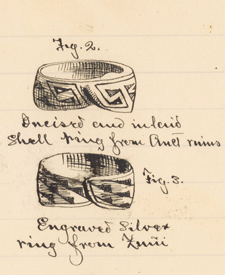
Vanished Worlds, Enduring People
Anthropologists & Native Americans
Starting in the late 1960s, Native Americans began protesting their treatment by anthropologists as objects belonging to a distant past. Where were the “anthros,” the protesters asked, when the government was pursuing destructive assimilation policies? How were native groups benefiting by their cooperation with these scholars?
Anthropology emerged as a distinct field of intellectual inquiry in the United States in the late nineteenth century, a time when the future of Native Americans seemed dubious. Indian tribes, as such, would soon be gone, anthropologists reasoned, and scientists and explorers should learn as much as possible about their customs and crafts before they vanished. In the scramble to document before it was too late, some anthropologists had little regard for native sensibilities, or for tribal desires to keep their ceremonies private and their dead buried in undisturbed graves.
Museums worked hand in hand with early anthropologists. Beginning in the late nineteenth century, they made concerted efforts to collect ethnographic and archaeological objects, sending staff members into the field, and hiring agents to amass collections. Beginning in the 1970s, in response to Indian protests, many slowly began to incorporate contemporary native perspectives into exhibitions of artifacts. Anthropologists, many of whom also worked as political activists on behalf of Indian tribes, were a critical element in passing the American Indian Religious Freedom Act in 1978. They and others continue their advocacy on behalf of Indians.
Recently, Native Americans have won validation for their claims to cultural patrimony and interpretation. The National American Graves and Repatriation Act of 1990 gives tribal members the right to reclaim religious or significant cultural artifacts from the museums or individuals who hold them. And the National Museum of the American Indian, which opened in Washington in 2004, provides native people with a new platform for disseminating the message of Native American achievement.